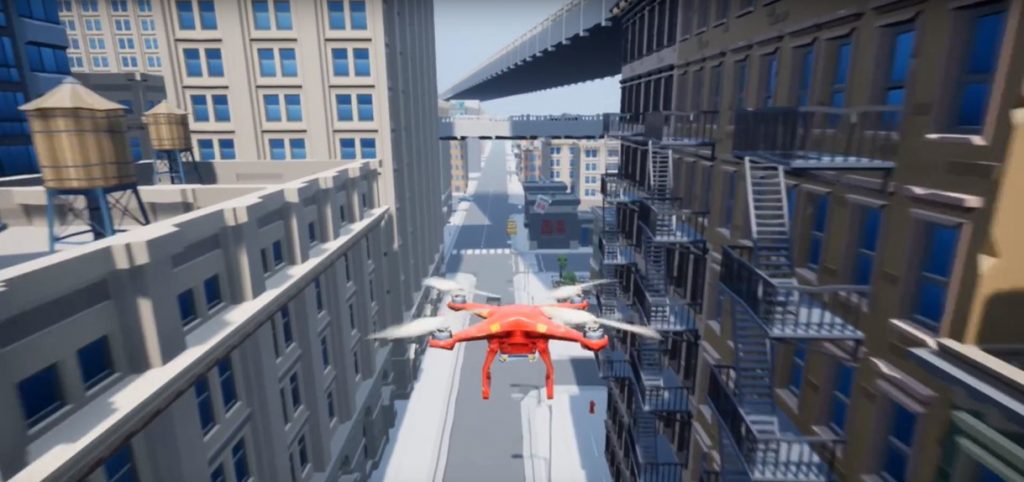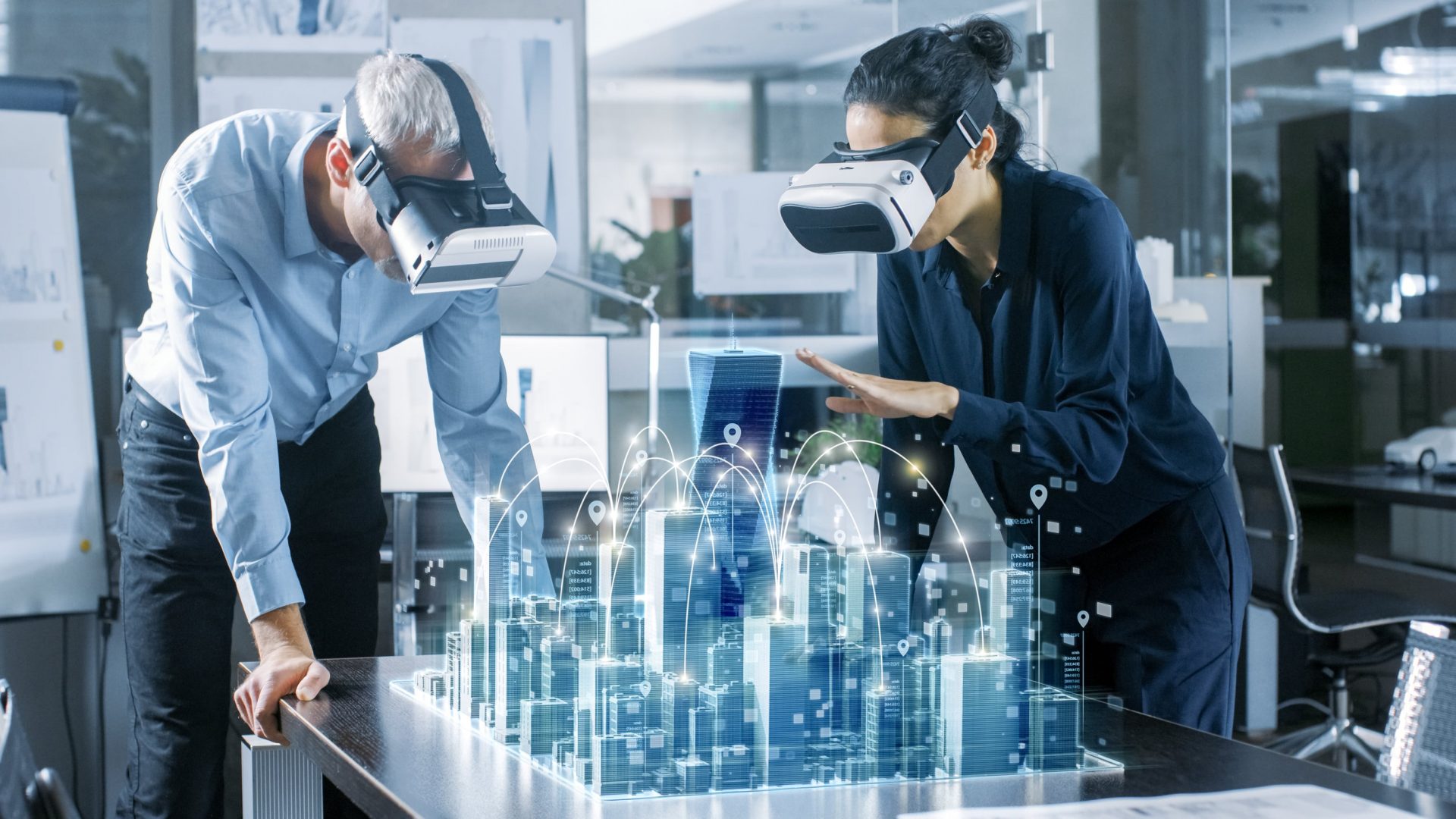One of the most exciting trends in the games industry has been how our innovations have been used in novel and imaginative ways by other industries. Game experiences are starting to move so close to reality that they could have a huge impact on how we design and operate within the designed environment. Here I take a look at how this could be done and what it means for the future of architecture and cities.
Unlike many of you reading this, I come from the altogether different background of architecture. Despite some exceptions, it’s a profession that continues to trail behind the curve of technological progress. In my opinion this is one of the many reasons why architects are often accused of being out of touch with the people who actually use these designed spaces. Part of the problem is cultural within that industry, and part is because of the available tools. And part is that the tools are designed for the culture of architecture. And this is where the games industry, with a different culture and perspective, can help.
Real-Time Game Changer
The advent of game engines such as Unreal Engine 4 and related plugins like TwinMotion have already allowed architects to generate renders including videos and virtual reality content in real-time, something which isn’t possible in other architectural rendering software. The ability to render real-time is a game changer because it elevates architectural visualisation to the status of design tool rather than just a mere marketing tool. Normally, rendering can only be done after no changes can be made to the design, but these game plugins could help architects visualise better during the design process, and so create better-designed buildings.
Using A Building Before Its Built
Visualising spaces is one thing, but being able to really breathe life into them and see how they actually operate is another thing altogether. The built environment is not just an arrangement of material; it’s just as much about how people (and other forms of life) inhabit and use the spaces. Evaluating how a project is used before its built (aka “pre-construction post-occupancy behaviour”) isn’t exactly a new phenomenon but it isn’t widely used or accessible to architecture practices aside from some of the larger corporations which are able to invest considerable time and money in such a technique. UE4 allows for the democratization of this capability to a much wider audience.
The engineering and construction giant Arup, for example, was able to model a train station they had extended and have scripted AI characters move through it. They then added a character a player could control. Using this pseudo-game, they were able to bring participants in and monitor how they would move through the designed space, learn where points of interest would be and how it made users feel. Crucially with this feedback, they were able to adjust the design and test it out as many times as they wanted until they got the desired results.

So how does Mercuna fit into all of this?
When proposing built architecture to the potential end-users, there is always a challenge of helping people understand what a diagram of a building will feel like once it has been built. Space is only fully realised when it’s given life, and people feel and experience the space with all their senses. When architects try to present this feeling to the end-user, they often do it by static model or visualisation. These have been great additions to traditional drawings because they add in visual stimulus such as lighting, and help make the space 3 dimensional. It has even started to be common to add in movement to these visualisations, by populating the spaces with AI people and pets. All of these features add to that sense of feeling and experiencing the space, yet they do not include movement in that 3rd dimension. And that’s where Mercuna could come in. By adding in flying birds, these 3D visualisations could be brought to life, helping people fully experience the spaces which are being designed for them, helping them understand how that space will work for them. Mercuna 3D Navigation might not be the only technology turning a diagram into an immersive visualisation, but it helps develop that experience to be as immersive and realistic as possible. And that’s really important when deciding what to build.
Mercuna 3D Navigation could also be useful in the wider context of public urban space to understand how we can future-proof our cities and possibly anticipate technological advances. We have already started to convert some of our old buildings for modern practices, particularly hospitals and schools, but the greater challenge is preparing whole cities for the fourth industrial revolution. An interesting example would be to understand how drones will use urban spaces, ranging from surveillance to micro-delivery of goods. Mercuna’s ability to understand how agents move within such a varied space could be used to ensure that new construction allows for (or perhaps deliberately inhibits) drone movement as this form of movement becomes more mainstream. This would help planners understand the challenges of 3D space across the city and help regulators understand the impact of having urban skies filled with drones trying to access buildings. Such modelling would need truly intelligent drone AI which were finding paths throughout the city, dynamically avoiding other drones and obeying all the laws of physics; all the things which Mercuna does so well! These models could also be shown in public consultations to get the local population to understand and be more involved in the changes made to where they live.
The Democratisation of Design
Gaming engines such as UE4 have already begun to cultivate an architectural audience but they could consolidate and grow this with the addition of even more non-videogame, designer-friendly interfaces. I would like to see a plugin which would allow architects to perform these sort of evaluations more easily. Knowing that such a plugin existed, SMEs who are normally averse to outsourcing work would be encouraged to do the evaluation themselves.
There is no need however to limit the use of UE4 to only professionals or designers however. By virtue of producing content for normal people, the games industry also has that edge that architecture needs to connect with its audience. Its accessibility allows non-architects to engage more in the process of design. This is already evident in projects such as the UN run program “Block by Block” which allows deprived communities to discuss and plan out their own neighbourhoods using Minecraft. I think the same rules can apply to the game engines themselves. Accessibility is key and unlike many other softwares used by architects and other disciplines, Unreal Engine is completely free for those not yet making a significant profit and this is what is so liberating about it.
As the technology available at the consumer level marches forward, it is not surprising that projects originally meant purely for entertainment are now capable of being adapted to bring ease-of-use and innovative ideas to other industries. This article barely scratches the surface of how one strand of games technology can be used to revitalise an ancient discipline. There are undoubtedly other applications in different industries. I’d love to hear your ideas in the comments!
Maeve


